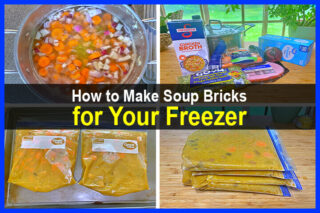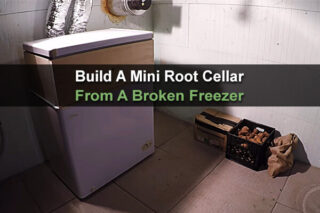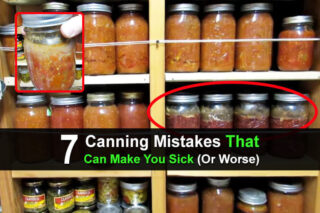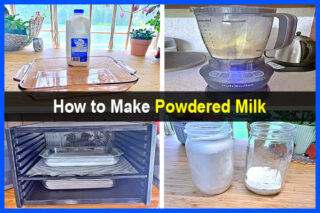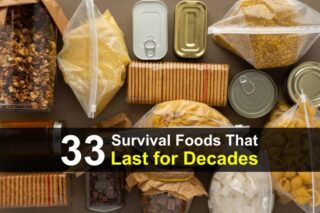Estimated reading time: 6 minutes
The first time I tried freezing strawberries, I dumped them in a bag and tossed them in the freezer. Only to realize that when I wanted to scoop out a few, I couldn’t! They were a solid lump of strawberries, and I had to use the entire bag at a time. I realized I needed to try flash freezing to solve this problem.
For my next experiment, I spread cherry tomatoes out across a cooking sheet, froze them, and put them in a freezer bag after they were frozen. Again, the tomatoes didn’t stick together, and I could take out just the amount I needed. This is the process of flash freezing.
In this article, we’ll talk about how to flash freeze foods at home. We’ll talk about what you need, what kinds of foods you can flash freeze, and how to go about it. We’ll also talk about how long these foods will last. But first, let’s take a deeper look at what flash-freezing really is.
Want to save this post for later? Click Here to Pin It On Pinterest!
What is Flash Freezing?
In the professional food industry, flash freezing is done at a commercial level and involves the process of freezing food quickly and at extremely low temperatures.
Freezing food quickly helps preserve the moisture and quality of frozen food. But home chefs don’t usually have access to this kind of equipment, so we need to use a slightly different method.
For the home cook, we can freeze food separately before putting it into freezer-safe, airtight containers. Then, you can defrost just the amount of food that you need instead of having to use it all at once.
It also reduces packaging waste and helps your food store for longer.
What Do You Need to Flash Freeze Food?
You don’t need a lot to get started with home flash freezing. Here’s what you'll need:
- Freezer-safe baking sheet or tray (make sure it will fit inside your freezer)
- Freezer-safe containers or bags
- Freezable foods
- Permanent marker for labeling
- And, of course, you’ll need a working freezer
What Kinds of Foods are Best for Flash Freezing?
When you flash freeze food, you want to freeze foods in small portions or individual pieces. These foods can be raw or cooked, but you’ll want to consider using food that you know freezes well. For example:
- Fresh berries, such as blueberries and raspberries, and sliced strawberries
- Larger pieces of fruit in slices, such as banana
- Small baked goods, such as cookies, muffins, or individual pieces of cake
- Sliced peppers and onions
- Raw bread dough, shaped into loaves
- Raw cookie dough, shaped into balls
- Small portions of meat, such as chicken tenders, hamburger patties, or meatballs
- Blanched vegetables such as broccoli, green beans, peas, Brussel sprouts, and cauliflower
- Individual portions of lasagna, mini meat-loaves, or casseroles
Some Foods Don’t Work Well with Flash Freezing
Not every food can be flash frozen. Some just won’t work well because it degrades the texture or even the taste. You’ll want to avoid:
- Eggs
- Cheese
- Liquids such as milk, soups and stews or anything that can’t be separated into portions
- Anything with cream fillings
- Fried or stuffed food
- Anything you wouldn’t usually freeze
How to Flash Freeze Foods
There are just a few simple steps to flash-freezing foods.
1. Prepare Your Food for Flash Freezing
You need to get your food ready to freeze. If you are freezing berries, you’ll want to wash them and pat them dry. If you are freezing vegetables, you may need to blanche them and let them cool before freezing. If you are going to freeze meat that has been cooked, you’ll want to prepare it, then let it cool.
2. Divide Food Into The Right-Sized Portions
Berries, peas, and cherry tomatoes can be frozen whole. However, for other foods, you’ll need to cut into the portion sizes that you like. For example, you might want to slice bananas into bite-size bits.
If you are freezing meat, you may want to cut it into regular serving-size portions. Items such as meatballs can be frozen whole.
3. Arrange Your Items on the Baking Sheet or Tray, Making Sure the Portions Aren't Touching
If they touch, they might freeze together. You’ll want to freeze these items for about 2 to 3 hours or until they are firm. If you prefer, you can put a piece of parchment paper down to prevent the food from sticking to the tray.
4. Transfer Your Food from the Baking Sheet to Your Freezer Containers
You might want to use freezer-safe plastic bags, reusable containers, or even vacuum-sealed packages. For example, if you are freezing hamburger patties, you can put parchment paper between them, so they don’t stick. Seal tightly.
Don’t use aluminum foil if you are freezing acidic items like lemons or tomatoes. This can cause a reaction with the aluminum foil.
5. Label Your Items Well
You’ll want to label your package with the name of the item, how much you have frozen, and the date you froze it.
6. Store Your Flash-Frozen Food in the Freezer Until You Are Ready to Use It
How Long to Keep Flash-Frozen Food
If food is stored at 0 degrees Fahrenheit or below, your food will technically be safe to eat indefinitely. However, over time, foods can lose quality like the taste or texture. The following dates can be considered ‘best used by:’
| Category | Item | How Long to Store in Freezer |
| Baked goods | Cakes, pies, cookies, breads | 3 months |
| Cooked meats | Pork chops, chicken breasts, etc | 3 months |
| Cooked Food | Blanched Vegetables | 8 to 12 months |
| Raw food | Berries | 1 year |
| Raw food | Hamburgers, poultry, raw dough | 3 to 6 months |
How to Use Flash Frozen Foods
When you’re ready to use your flash-frozen food, try thawing it in the refrigerator or microwave, then add it to your recipe like you usually would. For example, frozen berries or fruit can be put directly into smoothies without defrosting. Or thaw burgers in the fridge before putting them on the grill.
With just a little bit of prep, you can easily freeze and store food for your favorite recipes. Flash-freezing food is a simple process that helps you preserve your food and prevent waste.
Like this post? Don't Forget to Pin It On Pinterest!





